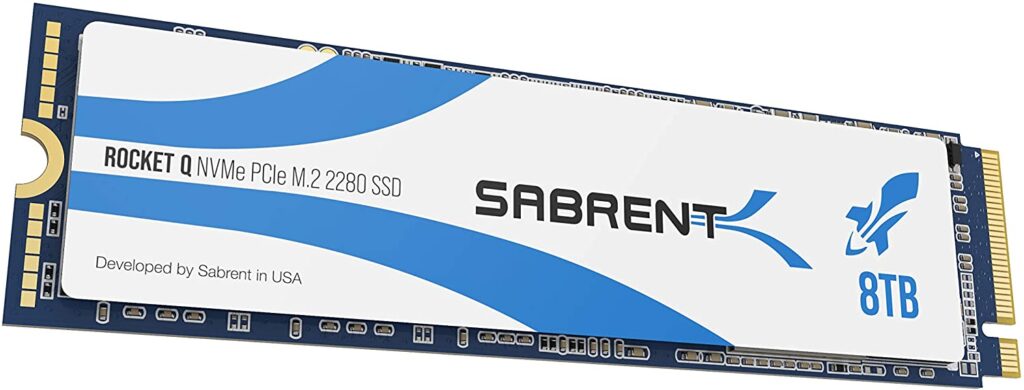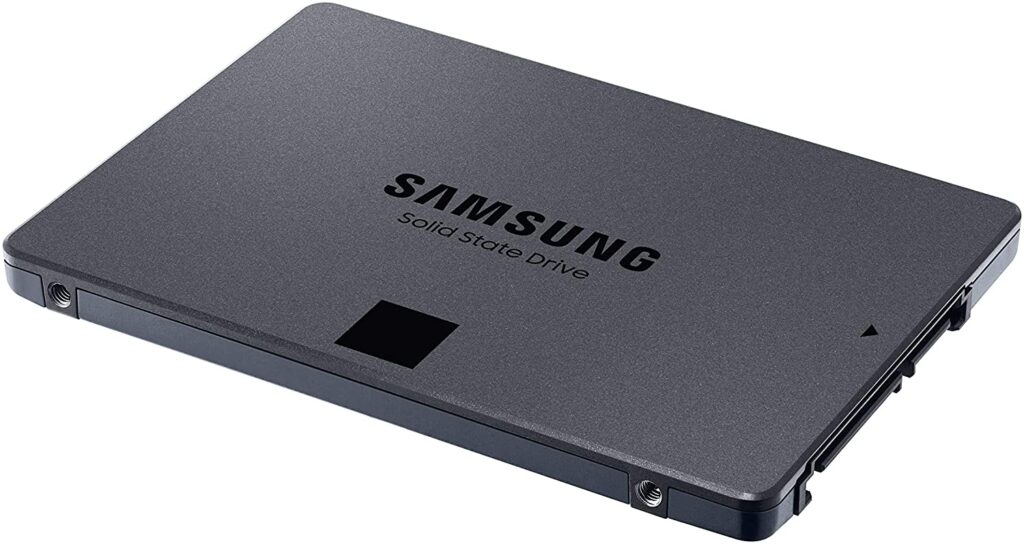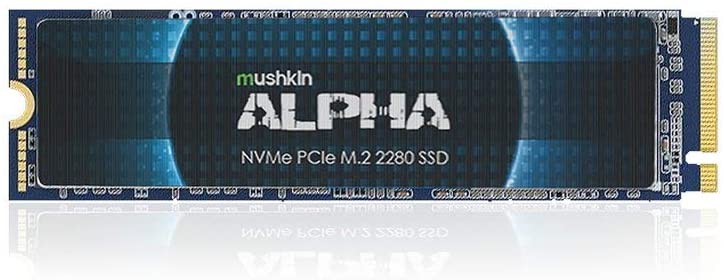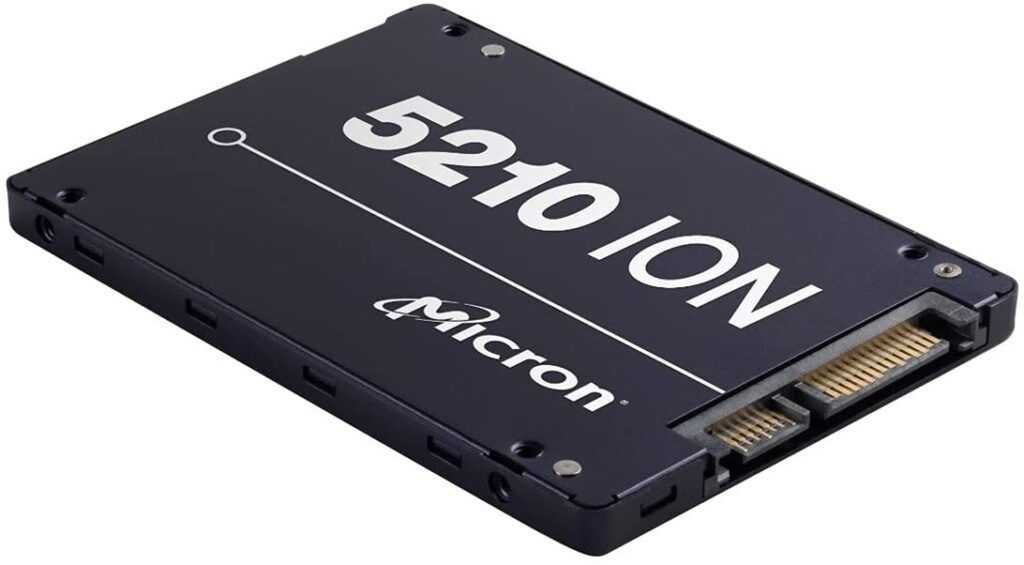SSD stands for Solid State Drive, this is the mass storage drive just like the traditional hard disk. It keeps the data stored on its place without any power. In addition to that, it helps in reading and writing of the data. Internal SSD is the core component that affects the overall speed of the computer. Equipping with the best 8TB internal SSD for your desktop computer, will help you enjoying the speed boost for smoother image or video editing.
SSD card is attached inside the computer with the help of IDE or SATA power connector similar to the hard drive. Though it is known to be similar to the hard drive but internally SSD is much different, hard drive is consisting of moving parts which makes it slower. While the SSD use the latest flash NASA storage system. Therefore, solid state drives can operate data faster than the hard drives.
List of The Best 8TB Internal SSD
There are several advantages of using the SSD over hard drive. Some of them are following.
- When the data splits up into different locations of the memory, the reading ability of the hard disk may decline. While the performance of the SSD does not change by the location of data.
- Hard drives use the moving parts which can cause the mechanical breakdowns. Though SSD does not contain any moving part so the chance of the breakdown is minimal.
- Hard drives may use more power to operate, while the SSD does not require extra power.
- Hard drives can sometimes prove to be noisy and heavy, while SSD are quite and light weight.
- Hard drives are not preferred these days, while SSD are demanded in the new computers.
With so many advantages there are some drawbacks of using SSD are present as well.
- They can cost you more than the hard drive.
- They deal with the smaller storage than the hard drive.
Now you understand the use, advantages and disadvantages of having SSD, we have reviewed some of the best 8TB internal SSD in 2024 for you below.
1. Sabrent Rocket Q 8TB Solid State Drive
The best thing about this SSD card is its pint size with the monstrous performance. It can efficiently compete with the other internal 8tb SSD. Moreover, it has the capacity of M.2 with the best software support. Sabrent also provide the user a benefit of reformatting the drive and then they can choose the size of the Rocket drive according to they demand, it can be either 512 bytes or 4K bytes.
Sabrent Rocket has also introduced these SSD cards in different capacities such as:
- 500 gigabytes with the reading ability of 2000 megabytes and writing speed up to 1000 megabytes per second.
- 1 terabyte with the reading capacity of 3200 megabytes and writing speed of 2000 megabytes per second.
- 2 terabytes with the reading speed of 3200 megabytes and writing speed up to 3000 megabytes per second.
- 4 terabytes with the reading capacity of 3200 megabytes and writing speed of 3000 megabytes per second.
- 8 terabytes with the reading memory of 3300 megabytes and writing ability of 2900 megabytes per second.
Features
- It has the storage capacity of 8 terabytes in single slot package.
- Dimension of this SSD is about 3.15 inches by 0.86 inches by 0.11 inches.
- The SSD consume less power while operating than the traditional hard drive.
- It has Gen3 and 4 interfaces.
- It manages the Smart and TRIM commands.
- Sabrent Rocket Q comes with the free sabrent acronics for making cloning the easy task.
- It was the first ever internal SSD that took out the world from the difficulties of slow hard drives.
Pros And Cons
2. SAMSUNG 870 QVO SATA III SSD
What makes Samsung 870 QVO unique from other internal solid-state drive is its high security with the large capacity. The mass storage capacity of the card is 8 terabytes. Whereas the dimension of the 870 QVO is 3.94 inches by 2.76 inches by 0.27 inches.
This card provides the amazing upgrade to the computer, by providing the large digital storage without any compromise on the quality of performance. Larger variable buffer and long-term high performance is accelerated through the TurboWrite.
Features
- It comes with the three-year warranty from Samsung.
- This SSD card is compatible with all type of desktop computers and laptops.
- It can read with the speed of 560 megabytes per second. Whereas the writing speed is up to 530 megabytes per second.
- New tools to upgrade the performance of the card can be downloaded through SAMSUNG magician 6.1 software.
- This Solid-State Drive supports SMART, Trim data reporting and 256-bit hardware coding.
Pros And Cons
3. Mushkin Alpha 8TB PCIe Internal Solid State Drive
As the name speaks for itself this drive provides the highest capacity with the improved performance of SSD. It uses the flash 3D NAND memory which is quite expensive. The factor being used to form this amazing SSD card is M.2 2280. Among the total bytes written this device is rated at 900 terabytes.
Features
- These drives are controlled by Phison E12S.
- It has the reading speed of about 3300 megabytes per second.
- While the writing speed of the memory is up to 2800 megabytes per second.
- The 4K random speed-reading speed of the SSD is 550K IOP and writing is of 680K IOP.
- The operating temperature of this SSD card is 0 degree to 70 degree Celsius.
- The product dimension is 0.86 inches by 3.14 inches by 0.08 inches.
- In such a small enclosure alpha is capable of keeping 8 terabytes of storage.
- This card uses the interface of generation 3 and 4 along with NVMe.
Pros And Cons
4. Micron 5210 Ion Solid State Drive
Micron has released 5210 Ion series in three different forms. 1.92 terabyte, 3.84 terabyte and 7.68 terabyte. What makes the 8-terabyte unique is its large capacity in the world’s first ever QLC (Quad level cell). Well, the best part about using QLC is that it is capable of 33% extra bits per each cell.
Features
- It has the reading speed up to 540 megabytes per second. While the writing speed of about 360 megabytes per second
- The random 4k read IOPs of Micron 5210 is about 90,000 megabytes and write 4K IOPs is up to 4.5 terabytes.
- The dimension of this Micron SSD card is 2.75 inches by 0.28 inches by 3.95 inches.
- This card is compatible with the SATA 3 and 6G interface.
- It has the digital storage capacity of 7.68 terabytes by using 3D NAND flash memory.
- Power needed for this SSD is 5 watts.
- It has a form factor of about 2.5 inches along with the AES encryption of 256 bits.
- This card uses the power in reading up to 2.8 watts and in writing 6.3 watts maximum, with the idle energy of 1.5 watts.
Pros And Cons
How To Pick The Best 8TB Internal SSD
The read and write speed of internal SSD is the most important point when we are looking for the best 8TB internal SSD. The factors affecting the read and write speed of internal SSD mainly include interface standards, interface types, and particle types.
Interface Standard Of Internal SSD
AHCI: (Serial ATA Advanced Controller Interface), based on mechanical hard disk characteristics. The mechanical hard disk has a highly delayed feature. The AHCI each command needs to read 3 registers, consumes 8,000 CPU loops, resulting in reading delays. Although more solid-state hard drives use AHCI standards, its design original intention and low delay is not adapted to a certain extent limit solid state drive speed.
NVME: (Non-Volatile Memory Express), specifically designed for flash classes. The NVME interface criteria do not need to read registers when executing commands can effectively reduce the delay between controllers and software interfaces. At the same time, the NVME standard can improve the IOPS of the solid state drive performance and have advantages of low power consumption and extensive drive applicability.
In the interface standard, NVME is significantly more advantageous than AHCI, but current AHCI is still the mainstream interface standard of the hard disk, and a considerable part of the solid state drive is also using the AHCI standard, the Solid state hard disk read and write speed under the AHCI standard is about 400 ~ 500MB/s, it has been able to meet the needs of most of ordinary users. Only some of the M.2 interface solid state hard drive starts using NVME standards, and read and write speed can generally reach 1000MB/s or more, and the price is also higher than the Solid State hard drive of the AHCI standard.
Interface Type Of Internal SSD
SATA3.0: The most widely used hard disk interface type, mature interface scheme, theoretical transmission bandwidth is 6Gbps, commonly seen in a 2.5-inch solid-state hard drive and mechanical hard disk.
mSATA: It can be seen as a mini version of the standard SATA interface. For portable equipment development, physical interfaces are consistent with mini PCI-E, and the theoretical transmission bandwidth is still 6Gbps. The only advantage is that the solid state drives with the mSATA interface are smaller than the SSD with SATA interface.
PCI-E: Frequently used in the development card such as graphics card and sound card, the data is directly connected to the processor, no need to pass memory call, its the transmission efficiency is higher than the standard SATA. There are two types of PCI-E interfaces applied to the solid state drive, one for PCI-E2.0 × 2, and the other is PCI-E3.0 × 4.0, the former theoretical transmission bandwidth is 10Gbps, the latter is 32Gbps.
M.2: It is seen as a new generation of interface standards for replacing mSATA. It is divided into Socket2 and Socket3, the former supports SATA, PCI-E × 2 interface, and theoretical transmission bandwidth is 10Gbps, the latter supports PCI-E × 4, its theoretical transmission bandwidth is 32Gbps.
U.2: The interface specification launched by the SSD Form Factor Work Group, it can be compatible with SATA-Express, SAS, SATA and other specifications, its theoretical transmission bandwidth is 32Gbps. Currently only a few solid state hard drive vendors are adopted U.2 Interface, and the solid state drives with the U.2 interface are large, the specifications are 2.5 inches.
The SATA and PCI-E interfaces are the most common interface type, and generally motherboards will have these two interfaces. mSATA, M.2 and U.2 are for a specific motherboard, so when you want to pick the best 8TB SSD, you should first confirm the interface type is supported by the motherboard.
Particles
The key role of read and write speed of the SSD is the flash chip used in the solid state drive. Different types of chip has different types of particles, their life and the price will also be different. At present, the flash chip of solid state drives on the market is mostly MLC and TLC, they are cost-effective, which can meet the needs of most consumer daily data copies. SLC generally appears in high-end solid state drives, suitable for enterprise users.
What Is The Difference Between Internal SSD and External SSD?
From the look of the product, External SSD is a SSD with a protective cover and SATA interface, and the Internal SSD is a card-type SSD used inside the computer. Of course, they have not only the difference in appearance, their interface and performance are also very different from each other.
The external SSD with the standard SATA interface has a large difference due to the different main control chip used inside and the different flash particle specification. The maximum read and write speed of External SSD is usually 550Mb/s. In addition, internal SSD has a lot of product specifications, such as mSATA, M.2 and PCI-E interfaces, so its performance is also large different.
From the view of product function, if we have a laptop installed internal SSD, we will no longer need to bring a external ssd or hdd throughout the day. But external SSD has its benefits too, for instance, our files that are loaded in an external SSD can be used on any other computers as we wish.
Final Thoughts
Technology has changed the storage of the computers from the traditional hard drives to the single slot, light weight, quite and incredibly fast solid-state drives. For making your computer perform faster with the mass storage capacity you can attach one of the best 8TB internal SSD card to your computer.
Choosing the most accurate SSD for your computer is one of the difficult tasks but we have made it easy for you by reviewing the best 8TB internal SSDs. Just pick the one best matches with your requirement and enjoy using.
Enjoyed this 8TB internal SSD review? Then be sure to check out our other guides.








